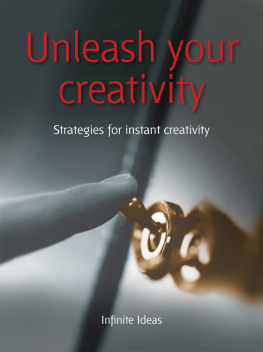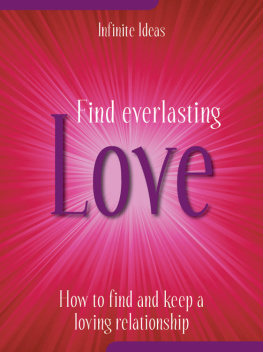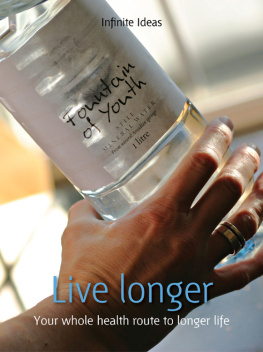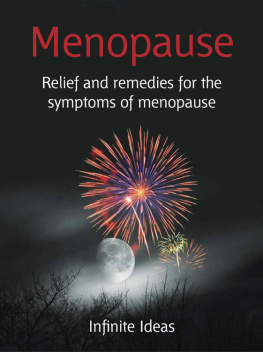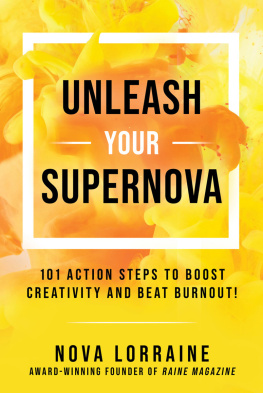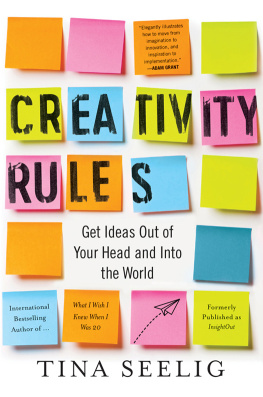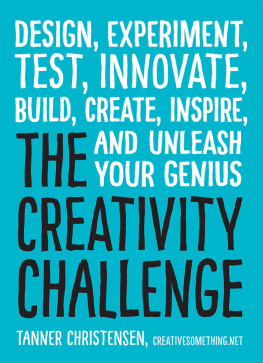Unleash your creativity
Strategies for instant creativity
Infinite Ideas
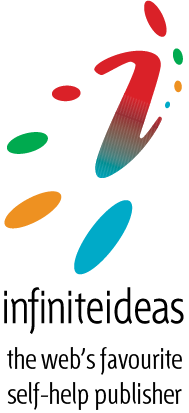
7. Restrict your choices to broaden your possibilities
Its perfectly possible to produce recipes for success based on just a few ingredients. More bread, anyone?
Every now and then, try to immerse yourself in creative exercises that use only one colour, palette, font or sound.
In other books that celebrate personal creativity, youll probably read a lot of guff about how anythings possible and there are no limits to what you can do. If you work without limits, however, its very easy to lose focus and for your projects to become sprawling, rambling efforts that require a huge amount of editing and refinement either by you or by someone else.
Imposing just one silly rule about what youre not allowed to do can have interesting results such as setting yourself the challenge of using only twenty-five letters of the alphabet to write with, as follows.
You might think it silly to hamstring your output in such a way, and at first it looks impossibly hard to do but its still worth a go, if only to gain a bit of insight into how your writing might spiral off down tortuous paths as you try to avoid using a solitary non-consonant. Although now, as you look at this paragraph, you may think its not that hard at all.
We write with restrictions all the time anyway without really noticing it. (Its the letter e by the way.) Every time you send someone a holiday postcard youre writing in a strict frame with a limited word count and your writing style changes accordingly: Weather great. Wish you were here. Etc.
Even if youre not on holiday, try and use postcards for all your written communications rather than A4 stationery (and think of the trees youll save). If youre feeling really keen, try using only the back of business cards.
If you need further inspiration in this area, pick up a book on one of the greatest examples of restriction: haiku poetry. Haiku is a seventeen-syllable verse form consisting of three metrical units of five, seven and five syllables. Each haiku always includes a kigo, a season word, such as blossom to indicate spring, mosquitoes to indicate summer, etc.
Restriction can be just as effective in fields other than writing, such as painting. Consider Picassos famous blue period, or Turners concentrated globs of orange or red. Some artists simply fall in love with one colour. Yves Klein went as far as to patent the ultramarine colour known as International Klein Blue, or IKB.
Film-maker Derek Jarman famously made a movie Blue that is just that over an hours worth of luminous blue and nothing else, accompanied by snippets of sound, music and Jarmans own voice talking about his own blindness and approaching death from AIDS-related illnesses. It is strangely affecting and effective.
Switching off a sense in this way can augment your understanding of the world around you. Try walking around the house for a while with your eyes closed (be careful!). If you want a good laugh, make a movie while youre doing it and see how the resulting footage differs from what youd film with your eyes open. Better still, play a game of blind mans buff with a few friends and get the person with the blindfold to film the experience (maybe have a few drinks first). The bulk of the movie you make will undoubtedly be rubbish, but you may find a few frames of brilliance that make you think about filming in a different way. Taking this to its logical conclusion, you can always blindfold your audience
Try cooking with only, say, three ingredients (best not do this blindfold). The more conservative among you will probably plump for eggs, flour and milk to make a pancake very smart but the real challenge is to use three quite disparate ingredients. Oysters, passion fruit and lavender, we can assure you, can be made into something really delicious.
How did it go?
QMost of my work is done at a desk in an office and my outputs are all pretty similar. What kind of restrictions are left for me to impose?
AIf youre an office worker, you probably work with a computer or word processor quite a lot. In the digital world one of the key restrictions is file size. Anyone who has sat at a computer waiting for a file to download from the internet knows the value of dealing in kilobytes rather than megabytes: it can be the different between a five second and a five minute wait. Next time you create a computer file, see how large it is and then set yourself the challenge of halving it. For example, this chapter, typed as a Microsoft Word document, panned out at about 30k. How could I cut it down to 15k? (The first step would be to type it in a different, simpler computer application or save it in a different format.) This exercise works even better with picture files, with drastic decisions to be made about colour, resolution, the size of graphic elements and so on. The picture you end up with might have very different qualities to the one you started with. And thats the whole point of restriction!
QThats all very well, but Im interested in the thought process, not the technology. How do I restrict that?
AThe technology is the thought process, but if you prefer, just stick to words. That age-old skill of prcis, learnt at school, is a superb restrictive art. Take something youve written and try to reduce it to half its word length. Then halve it again.
Heres an idea for you
The founding father of bossa nova, Jobim, was once criticised (by an idiot) for being only concerned with rhythm and lacking any facility with tune or melody. Jobims creative response was a tune called One Note Samba, a fantastic example of restriction at work. Could you dream up a song that is based around one single note?
Defining idea
I think people who are not artists often think artists are inspired. But if you work at your art you dont have time to be inspired. Out of the work comes the work.
JOHN CAGE, composer
8. The three types of objectives: easy, hard and useless
Theres no harm in shooting for the moon as long as your gun is the size of Ethiopia. How to make targets for yourself that are achievable and not just pipe dreams.
Would-be writers often talk about sitting down one day and writing that novel, but really thats as silly as deciding to make a Hollywood feature as your first step into film-making.
Whenever you first enter a creative field, you will almost certainly need to start small and know your limitations. If youre a film-maker, for example, the best way into the business is with a very short film: two minutes only, or maybe ten if you have the resources and confidence. If youre that would-be writer, write an article or a short story first, not a novel or write a poem, maybe, as its specific form and structure can act as your safety net.
If youre really set on tackling a big task, always try and break it down into smaller, more manageable chunks. (Instead of holding your breath for an hour, say, hold it for sixty separate minutes.) Writers of novels, for example, often get started by writing just one self-contained fragment or chapter that is publishable as a stand-alone short story well before the novel has been completed. By adopting this approach, the bigger project is still trundling along, but there are clear and measurable staging posts along the way to remind you that you are making genuine progress.
By busting your big project apart, you may actually discover that it is two or three different projects in disguise. We discovered this ourselves once when working on a very large and unwieldy idea for a complex online interactive game called XmasPresent. In order to get a grip on what was a rather hazy concept, we decided to tackle three basic issues one by one:
Next page
